Category: 12 Questions
-
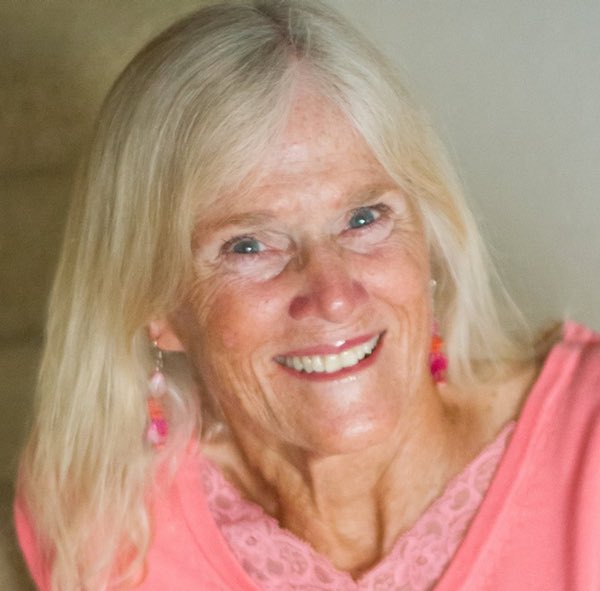
The Neglected Louie B. Felt
RoseAnn Benson’s book Alexander Campbell and Joseph Smith: 19th-Century Restorationists compares the two best known and successful figures in the broad restorationist movement of the 19th century. While those familiar with Latter-day Saint history know the relationship between the two movements, oddly in broader religious history only Campbell and his Disciples of Christ are considered…
-
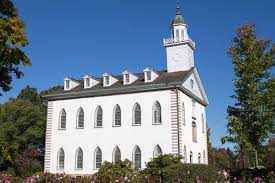
6 Questions for Tom Kimball on the Kirtland Temple
The Sunday School curriculum is currently covering the Kirtland period of LDS history, including a full lesson on the Kirtland Temple. While we often treat that temple as part of 19th-century history, it is still around, it is still used for religious services, and it is available for public tours for visitors of any religious…
-
12 More Questions for Armand Mauss, Part 3
We are pleased to post the last installment of our Q&A with Armand Mauss, LDS author and scholar. See Part 1 for a full introduction and the first set of questions and answers, and Part 2 for the second set. 9. In the third chapter of your recent book Shifting Borders and a Tattered Passport,…
-
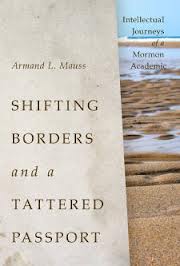
12 More Questions for Armand Mauss, Part 2
We continue our Q&A with Armand Mauss, LDS author and scholar. See Part 1 for a full introduction. 5. Let’s talk now about some of the issues you discussed in your memoir, Shifting Borders and a Tattered Passport: Intellectual Journeys of a Mormon Academic (U of U Press, 2012). In Chapter 6, “Recurrent Visits with…
-
12 More Questions for Armand Mauss, Part 1
Way back in April 2004, almost exactly ten years ago, Armand Mauss was the very first Times and Seasons 12 Questions guest (see Part 1 and Part 2). A lot has happened in the last ten years, so Armand has graciously agreed to answer 12 more questions. He was a Professor of Sociology for many…
-
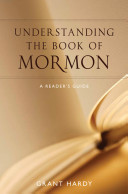
12 Questions with Grant Hardy – part II
Here is the conclusion of Times & Seasons look at Grant Hardy’s new book Understanding the Book of Mormon, and the second half of our 12 Questions interview:
-
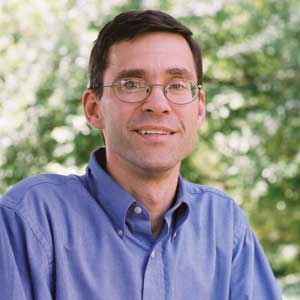
12 Questions with Grant Hardy – part I
To cap off our roundtable review of Grant Hardy’s new book Understanding the Book of Mormon we’re fortunate to feature an interview with the book’s author. The interview will be posted in two parts. Our thanks to all who have participated, and especially Bro. Hardy.
-
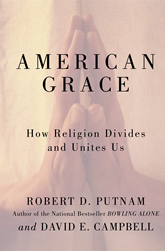
12 Questions with David E. Campbell Part II
Here is Part II of our 12 Questions interview with David E. Campbell, co-author of American Grace: How Religion Divides and Unites Us (see here for Part I). In this half of the interview Campbell answers questions related specifically to his and Robert Putnam’s research concerning Mormonism. 1. Mormons feature prominently in this book. I’m…
-
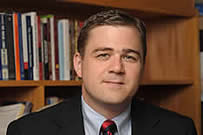
12 Questions with David E. Campbell – Part I
American Grace: How Religion Divides and Unites Us by Robert D. Putnam and David E. Campbell is deservedly receiving a great deal of attention. It is undoubtedly the most comprehensive and significant sociological examination of religion in America to be published in decades, and perhaps ever. Aside from the sheer mass of sociological data that…
-
Royal Skousen’s 12 questions — The Critical Text Version
Last month we posted Royal Skousen’s discussion of his work on recovering the earliest version of the Book of Mormon, along with some updates. Unfortunately, that post garnered some annoying formatting problems — mostly due to the new format T&S adopted this year. We’re happy to now present to you mark III of Royal Skousen’s…
-
12 Questions and a Book by Royal Skousen
5 years ago we published one of my favorite “12 Questions” posts, in which Royal Skousen discussed in some depth what he has learned from his extensive work on the earliest editions of the Book of Mormon. His book, The Book of Mormon: The Earliest Text, is being published in September by Yale University Press…
-
12 Questions for Marvin Perkins, Part Four
Here is the last installment of our 12 Questions with Marvin Perkins, comprised of Brother Perkins’ responses to our last two questions. We’d like to thank Brother Perkins for the time and effort he’s put in to giving us a set of very substantive and thought-provoking responses.
-
12 Questions for Marvin Perkins, Part Three
Here is Part Three of our 12 Questions with Marvin Perkins, comprised of Brother Perkins’ responses to our next five questions. See Parts One, Two, and Four for our introduction of Brother Perkins and his responses to our other questions.
-
12 Questions for Marvin Perkins, Part Two
Here is Part Two of our 12 Questions with Marvin Perkins, comprised of Brother Perkins’ responses to our next four questions. See Parts One, Three and Four for our introduction of Brother Perkins and his responses to our other questions.
-
12 Questions for Marvin Perkins, Part One
Marvin Perkins has graciously agreed to answer a few questions from Times & Seasons. Brother Perkins is a Latter-day Saint music producer who is currently the Public Affairs Co-chair for the Genesis Group and who has worked to nurture understanding between African Americans and Latter-day Saints and attack misconceptions. As part of this effort, he…
-
12 Questions for the LDS Newsroom, Part Two
This is Part Two of responses provided by representatives of the LDS Newsroom to a set of questions submitted by T&S permabloggers. See Part One for the first six questions and responses.
-
12 Questions for the LDS Newsroom, Part One
Representatives from LDS Public Affairs who manage and direct the Newsroom site at LDS.org agreed to respond to a dozen questions submitted by the T&S permabloggers. We are pleased to post the first six questions and answers below, with the second set of six to follow shortly. We appreciate the time and effort that went…
-
MWS: Brandon Sanderson
Brandon Sanderson is the Campbell-nominated author (twice-nominated now) of the fantasy novels Elantris and Mistborn: The Final Empire. His novel Well of Ascension, second in the Mistborn trilogy, will be published in a few months. Other projects (including the playfully titled Alcatraz Versus the Evil Librarians) are on the horizon. Brandon also recently released another…
-
MWS: Shannon Hale
Shannon Hale is a Newbery Honor-winning, New York Times bestseller-listed author of youth and fantasy fiction, most particularly Goose Girl and Princess Academy. This week sees the release of her latest novel Austenland, her first adult fiction novel. She is a returned missionary and lives in Salt Lake City with her husband and two under-three-years-old…
-
MWS: Doug Thayer
Douglas Thayer is one of the pioneers of what Eugene England called “faithful realism” in his definitive study of Mormon literature. Besides having taught literally thousands of Mormon writers during his fifty years as a professor of English at Brigham Young University, his short story collections Under the Cottonwoods and Mr. Wahlquist in Yellowstone have…
-
Lots of Questions for Greg Whiteley
“Probably the only people who are more lonely in an LDS ward than musicians who used to be almost-famous are filmmakers who never were”–Greg Whiteley, director of New York Doll.
-
An Interview with Valerie Hudson
BYU Political Science professor Valerie Hudson has been in the news lately as a result of her new book, Bare Branches.
-
An Interview with Jared Ludlow
Jared Ludlow has been at BYU-Hawaii since 2000 and is an assistant professor in the History and Religion Departments. He earned his PhD in a joint program in Near Eastern Religions from the University of California-Berkeley and the Graduate Theological Union. He is the author of Abraham Meets Death: Narrative Humor in the Testament of…
-
An Interview with Todd Compton
Independent scholar Todd Compton is the author of the much acclaimed volume In Sacred Loneliness: The Plural Wives of Joseph Smith (hereafter, ISL) and three forthcoming books: Victim of The Muses: Poet as Scapegoat, Warrior and Hero in Greco-Roman and Indo-European Myth and History (Harvard University Press), Fire and the Sword: A History Of The…
-
Richard Bushman Responds: 12Q on RSR
Richard Bushman was gracious enough to respond to twelve questions about Rough Stone Rolling.
-
Twelve Questions with Greg Whiteley
Greg Whiteley, the director of the very well-received new movie New York Doll, has kindly agreed to answer questions from our readers.
-
12(ish) Questions with Senator Robert F. Bennett
A while ago, we announced that Senator Robert F. Bennet (R-Ut) had agreed to do 12 Questions with T&S. Senator Bennett has read all of the posted questions and offers his answers to the questions below.
-
12 (or so) Questions for Kathleen Flake
Back in November, we solicited questions for Kathleen Flake, author of the terrific book The Politics of American Religious Identity (2004). We are now pleased to present her responses. Thanks Professor Flake! 1. How have you negotiated the tension between focusing on Mormon studies versus the broader issues within your discipline? How have your faith…
-
12 Questions with Senator Robert F. Bennett
Our next installment of the 12 Questions series will be with Robert F. Bennett, the junior Senator from Utah. Senator Bennett, a Republican, was elected to the Senate in 1992. As Assitant Majority Whip, he is a member of the Republican leadership. Prior to his election, he was a business man, PR executive, lobbyist, and…
